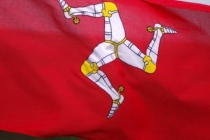Manx history
Mesolithic Period (Hunter gatherers)
The earliest traces of humans on the Isle of Man can be traced back to the Mesolithic Period, also known as the Middle Stone Age. During this time humans were living in small temporary shelters, hunting, fishing and gathering for their food. Small flint tools of stone or bone were used, which have been found on and near the coast. Some of these artefacts are kept at the Manx Museum.
Mesolithic Period on the Isle of Man 8000 - 4000 BC
Neolithic Period (First farmers)
The Neolithic Period or New Stone Age saw the coming of new technology to the Isle of Man. This brought an increased knowledge of farming, stone tools and pottery. During this period Megalithic Monuments started to be constructed. These large stone structures formed burial cairns for those, such as chieftains, and their families. Examples from this period can be found at Cashtal yn Ard near Maughold, King Orry's Grave in Laxey, Meayll Circle near Cregneash, and Ballaharra Stones in St Johns.
Neolithic Period on the Isle of Man 4000 - 2000 BC
Bronze Age (First metal workers)
An influx of ideas, technology and material came to the island during this period. Although trade links between the Isle of Man and it's neighbours had already existed at least since Neolithic times. New metal working skills with bronze saw the replacement of stone for weapon making, tools and prestigious goods.
Bronze Age on the Isle of Man 2000 - 500 BC
Celtic Iron Age (Celtic farmers)
This period saw the development of the Celtic Iron Age. It brought knowledge of working with iron. The Iron Age witnessed preparation against attack with large hill forts on summits and smaller forts along the coastal cliffs. The people of this time were not just developing their fortifications. Over this period they also built roundhouses which also existed in the Bronze Age. These large timber structures had low roofs and a central hearth. A chieftain, his family, household and animals all lived together. The Roman invasion of much of Britain appears to have had little impact on the Isle of Man. The Romans seem to have ignored the island and there is no evidence of any occupation.
Celtic Iron Age on the Isle of Man 500 BC - 500 AD
Early Christian Period
The Isle of Man was introduced to Christianity during this era. Across the countryside keeills (chapels) and crosses appeared. The early keeills, made of sod and vegetation no longer exist but later ones made of stone can still be identified. The small keeills were maintained by priests, who lived in cells close to or attached to the chapel. Most keeills were surrounded by a burial ground. Significant from this time are the stone crosses. They range in style and skill following on from Oghams with their basic burial inscriptions. Some of the earliest crosses date from around 650 - 800 AD. Today many of the crosses can be seen in parish churches or churchyards, or at the Manx Museum.
Early Christian Period on the Isle of Man 500 - 750 AD
Norse (Viking) Period
This saw Vikings arriving to this land of the Celts bringing with them their Pagan beliefs and customs. The Norse first came to the Isle of Man at the end of the 8th century, although it was not until well into the 9th century, that the island would be ruled by them. Over time the Norse eventually settled with the local Celts and inter-married. They were absorbed into the local population where the culture took on a blend of Celtic and Norse. The Celts took on Norse beliefs as Myths, Norse names and government, and also lived in Norse designed houses. The Manx have the Norse to thank for the Tynwald Parliament, many defensive works on forts, and some of the finest carved crosses.
Norse (Viking) Period on the Isle of Man 798 AD - 1265 AD
Medieval Period
Magnus, the last Viking King of Mann, died in 1265. The island then passed from Scottish to English rule and back again as they fought for control. Throughout this time both Castle Rushen and Peel Castle were fortified against attacks, as were many of the island forts. In addition to the military fortification the Isle of Man also saw new and improved ecclesiastical buildings around the island. These included improvements to the monastery Rushen Abbey (est. 1134 under Norse Rule).
Medieval Period on the Isle of Man 1265 AD-1765 AD
Article type:
- Manx





